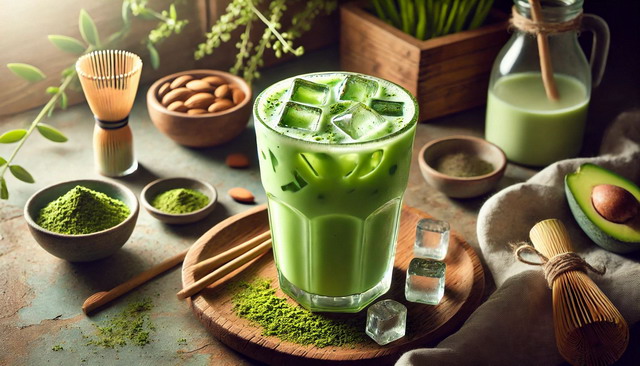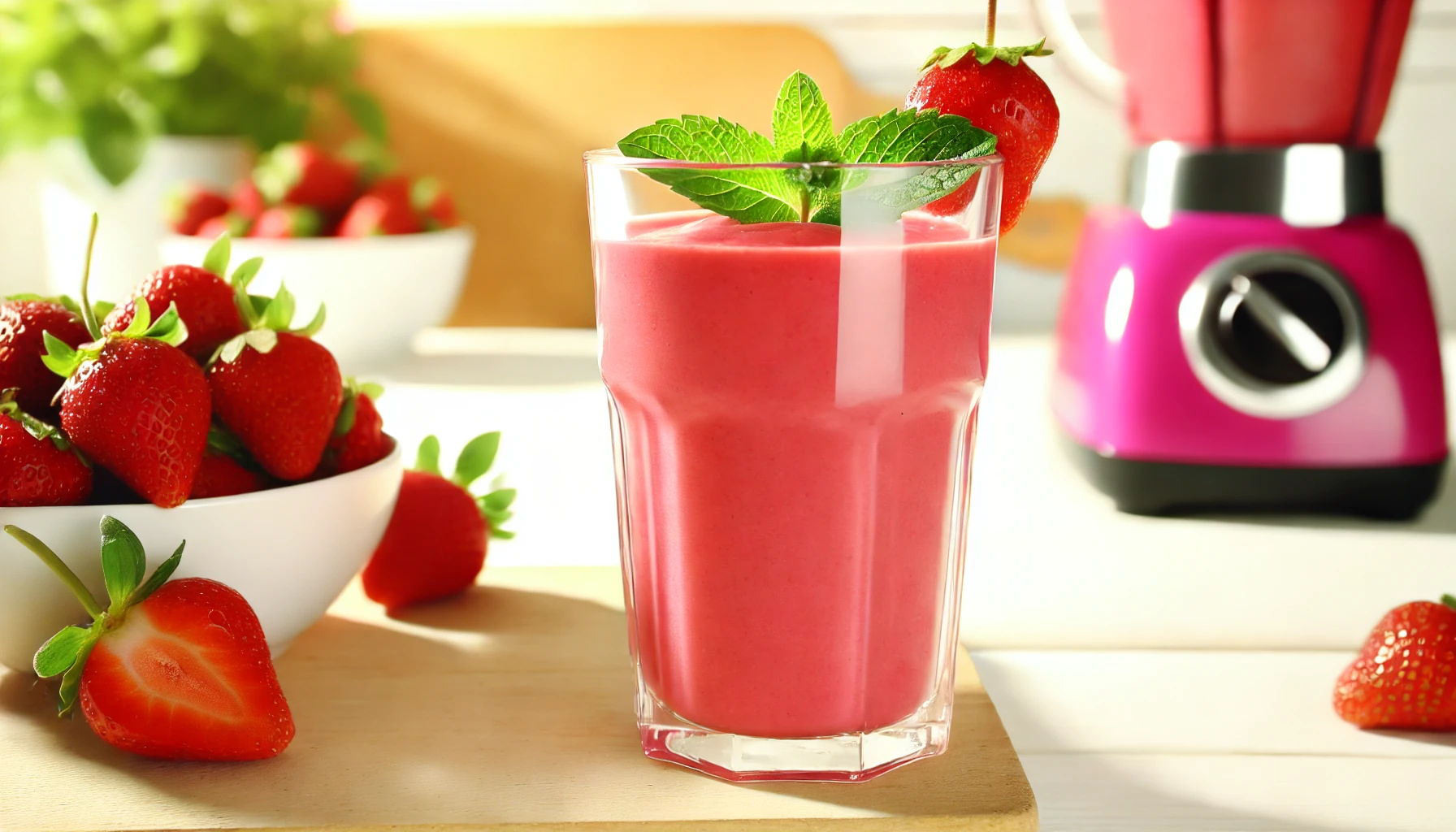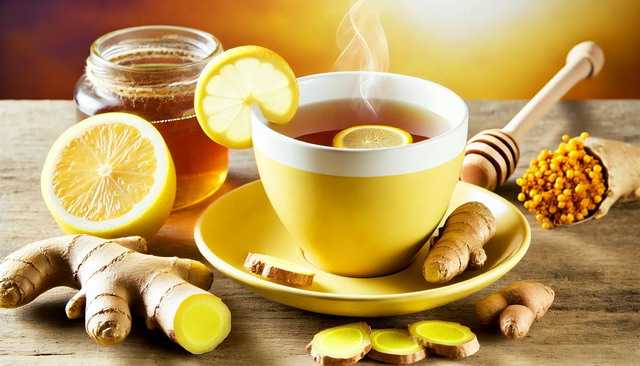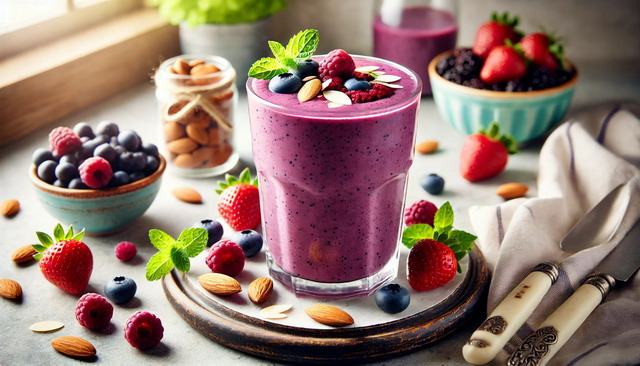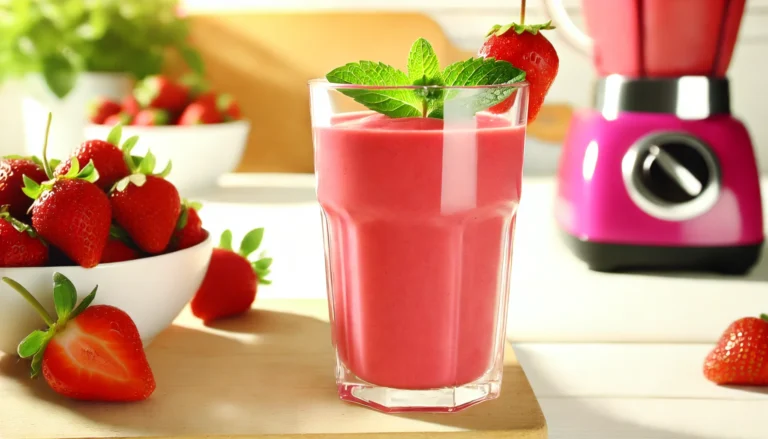In recent years, matcha has surged in popularity, transcending the traditional confines of Japanese tea ceremonies to become a staple in modern kitchens worldwide. With its vibrant green hue, earthy flavor, and a reputation for delivering a potent caffeine kick without the jitters, matcha has found its way into everything from lattes to smoothies. But as more people adopt health-conscious lifestyles, particularly the Paleo diet, the challenge of enjoying beloved beverages like matcha lattes without compromising dietary principles has emerged. Enter the Paleo Iced Matcha Latte, a refreshing, creamy, and nourishing drink that aligns with the Paleo ethos while delivering all the benefits of matcha.
So, what exactly is a Paleo Iced Matcha Latte? At its core, it’s a cold, frothy drink made from high-quality matcha powder, a dairy-free milk alternative, and a natural, unrefined sweetener. But it’s more than just a simple beverage; it’s a fusion of ancient traditions and modern dietary trends, offering a delicious way to stay cool and energized throughout the day.
In this blog post, we’ll explore the essentials of a Paleo Iced Matcha Latte, diving into what makes it Paleo-friendly, the health benefits it offers, and why it might just become your new favorite summertime drink. Whether you’re a seasoned Paleo enthusiast or someone curious about trying a healthier alternative to your usual iced latte, this guide will provide you with everything you need to know to create the perfect Paleo Iced Matcha Latte at home.
What Makes a Matcha Latte Paleo?
To fully appreciate the brilliance of a Paleo Iced Matcha Latte, it’s essential to understand the principles of the Paleo diet. Often dubbed the “caveman diet,” Paleo is rooted in the idea of eating like our Paleolithic ancestors—consuming foods that were likely available to early humans before the advent of agriculture. This means prioritizing whole, unprocessed foods, such as lean meats, fish, vegetables, fruits, nuts, and seeds, while steering clear of grains, legumes, dairy, refined sugars, and processed foods.
So, how does a traditional matcha latte stack up against these guidelines? A classic matcha latte typically contains matcha powder, milk, and sometimes sugar or other sweeteners. While matcha itself is Paleo-friendly, the inclusion of dairy and refined sugars puts the traditional version at odds with the diet’s core tenets. Dairy, for example, is excluded from the Paleo diet because it was not a part of the human diet until the advent of farming. Similarly, refined sugars are avoided due to their highly processed nature and the negative impact they can have on health, such as spiking blood sugar levels and contributing to inflammation.
This is where the concept of a Paleo Iced Matcha Latte comes into play. By making a few simple substitutions, you can enjoy all the benefits of a matcha latte without straying from your Paleo lifestyle. Here’s how:
- Dairy-Free Milk Alternatives: One of the easiest and most effective swaps in creating a Paleo-friendly matcha latte is replacing dairy milk with a plant-based alternative. Almond milk and coconut milk are popular choices among Paleo followers. Both options are creamy, rich, and complement the grassy, slightly bitter taste of matcha without overpowering it. Almond milk provides a lighter, nutty flavor, while coconut milk offers a thicker texture with a subtle sweetness that pairs beautifully with matcha. These plant-based milks are also packed with nutrients, such as healthy fats, vitamins, and minerals, making them a nutritious addition to your Paleo diet.
- Natural Sweeteners: Sweetening your Paleo Iced Matcha Latte requires a bit of creativity, as refined sugars are off the table. Fortunately, nature provides us with several Paleo-approved sweeteners that not only align with the diet’s principles but also add their own unique flavors to the drink. Honey, for example, is a natural sweetener with antimicrobial properties, offering a warm, floral sweetness that pairs well with the earthiness of matcha. Coconut sugar is another excellent option; it has a lower glycemic index than regular sugar, meaning it causes a slower, more sustained release of glucose into the bloodstream. Additionally, coconut sugar brings a subtle caramel flavor that can enhance the overall taste profile of your latte. Maple syrup, though not as common, is another viable sweetener, offering a rich, complex flavor with a hint of smokiness.
- High-Quality Matcha Powder: The star of the show, matcha powder, is inherently Paleo-friendly, but not all matcha is created equal. For a truly authentic and health-boosting Paleo Iced Matcha Latte, it’s crucial to use high-quality, ceremonial-grade matcha. This type of matcha is made from the youngest, most tender leaves of the Camellia sinensis plant, which are carefully stone-ground into a fine powder. Ceremonial-grade matcha is prized for its vibrant color, smooth texture, and slightly sweet, umami flavor, making it ideal for lattes. Additionally, it’s packed with antioxidants, including a unique catechin called EGCG (epigallocatechin gallate), which has been linked to numerous health benefits, including improved metabolism and reduced inflammation.
By combining these carefully chosen ingredients, a Paleo Iced Matcha Latte not only adheres to the principles of the Paleo diet but also enhances the traditional matcha latte experience with richer flavors and added health benefits. Whether you’re sipping it as a morning pick-me-up or a mid-afternoon refresher, this drink is a perfect way to enjoy matcha in a way that aligns with your Paleo lifestyle.
Paleo-Friendly Sweeteners for Your Iced Matcha Latte
When it comes to crafting the perfect Paleo Iced Matcha Latte, sweeteners play a crucial role. In a traditional matcha latte, refined sugar is often used to balance the bitterness of matcha, but for those following a Paleo diet, refined sugars are off-limits. Fortunately, there are several Paleo-friendly sweeteners that not only align with dietary guidelines but also enhance the flavor of your iced matcha latte, adding a natural sweetness without compromising on health.
1. Honey: The Sweet and Nutritious Option
Honey is one of the most popular natural sweeteners in the Paleo community, and for good reason. As an unprocessed, natural product of bees, honey is rich in antioxidants, vitamins, and minerals. It provides a distinctive sweetness that complements the earthy, grassy notes of matcha, creating a balanced flavor profile in your latte.
One of the key benefits of using honey is its versatility. You can use it in varying amounts to achieve your desired level of sweetness, and it dissolves easily in both hot and cold beverages. Additionally, honey has antimicrobial properties, which means it can contribute to your overall health by supporting your immune system. When choosing honey, opt for raw or organic varieties to ensure you’re getting the purest, most nutrient-rich product available.
2. Coconut Sugar: The Caramel-Like Sweetness
Coconut sugar, derived from the sap of coconut palm trees, is another excellent Paleo-approved sweetener. It’s less processed than regular sugar and retains many of the nutrients found in the coconut palm, such as iron, zinc, calcium, and potassium. Coconut sugar has a lower glycemic index compared to refined sugar, which means it has a less dramatic impact on blood sugar levels, making it a healthier choice for those looking to avoid energy crashes.
Coconut sugar’s unique flavor profile is what really sets it apart. It has a deep, caramel-like taste that pairs beautifully with the rich, slightly bitter notes of matcha. This makes it a perfect addition to your Paleo Iced Matcha Latte, offering a subtle sweetness that enhances the overall experience without overpowering the delicate flavor of the matcha.
3. Maple Syrup: The Rich, Complex Sweetener
Maple syrup is another natural sweetener that fits well within the Paleo framework. Extracted from the sap of maple trees, this syrup is minimally processed, preserving its rich flavor and nutritional content. Maple syrup is a good source of manganese and zinc, two minerals that support immune function and overall health.
The flavor of maple syrup is distinctly bold, with a complex sweetness that can add depth to your iced matcha latte. It’s particularly well-suited for those who prefer a stronger, more robust sweetness in their beverages. Like honey, it dissolves easily and can be used in both hot and cold drinks. When selecting maple syrup, choose 100% pure maple syrup to avoid any added sugars or artificial ingredients that could detract from its natural goodness.
Coconut Water with Fresh Lime: A Refreshing Elixir for Health and Hydration
How to Make the Perfect Paleo Iced Matcha Latte at Home
Now that you have a good understanding of the ingredients, it’s time to bring everything together and create your own Paleo Iced Matcha Latte at home. Making this refreshing drink is easier than you might think, and with the right tools and techniques, you can achieve a perfectly smooth and creamy latte every time.
1. Gather Your Ingredients
To make a Paleo Iced Matcha Latte, you’ll need the following ingredients:
- 1 teaspoon of high-quality ceremonial-grade matcha powder
- 1 cup of your preferred dairy-free milk (such as almond milk or coconut milk)
- 1-2 teaspoons of your chosen Paleo-friendly sweetener (honey, coconut sugar, or maple syrup)
- Ice cubes
- Optional: a dash of vanilla extract or a pinch of cinnamon for added flavor
2. Prepare the Matcha
Start by sifting your matcha powder into a bowl to remove any clumps. This step is crucial for achieving a smooth, lump-free latte. Next, add a small amount of warm (not boiling) water to the matcha—about 2-3 tablespoons should suffice. Using a bamboo whisk, whisk the matcha and water together in a zigzag motion until the mixture is frothy and smooth. If you don’t have a bamboo whisk, a small hand whisk or milk frother can also work.
3. Sweeten the Matcha
Once your matcha is prepared, it’s time to sweeten it. Add your chosen sweetener to the matcha mixture and stir well until it’s fully dissolved. If you’re using a liquid sweetener like honey or maple syrup, this step is straightforward. If you’re using coconut sugar, you might need to whisk a bit longer to ensure it dissolves completely.
4. Mix the Latte
In a tall glass, add a handful of ice cubes, then pour your sweetened matcha over the ice. Next, pour your dairy-free milk over the matcha, filling the glass. You can use a spoon or straw to gently mix the drink, combining the matcha and milk until they’re evenly blended. The result should be a beautifully layered drink with a vibrant green hue at the bottom and creamy milk on top.
5. Optional Add-Ins
If you’re feeling adventurous, you can customize your Paleo Iced Matcha Latte with a few optional add-ins. A splash of vanilla extract can add a warm, sweet note, while a pinch of cinnamon can enhance the earthy flavors of the matcha. You might also try adding a small amount of collagen powder for an extra health boost, particularly if you’re looking to support your skin, hair, and joints.
Health Benefits of a Paleo Iced Matcha Latte
Drinking a Paleo Iced Matcha Latte is not just a delightful way to cool off; it also offers numerous health benefits, thanks to the powerful properties of matcha and the nutrient-rich ingredients used in Paleo-friendly recipes. Here’s a closer look at some of the key benefits you can enjoy by incorporating this drink into your daily routine.
1. Rich in Antioxidants
Matcha is renowned for its high concentration of antioxidants, particularly a type of catechin known as EGCG (epigallocatechin gallate). Antioxidants are compounds that help protect your body from damage caused by free radicals—unstable molecules that can contribute to aging and the development of chronic diseases. By consuming matcha regularly, you’re giving your body a potent dose of these protective compounds, which can help reduce inflammation, support healthy skin, and even lower your risk of certain types of cancer.
2. Sustained Energy and Focus
One of the standout benefits of matcha is its ability to provide a steady, sustained release of energy throughout the day. Unlike coffee, which can lead to jitters and energy crashes, matcha contains a combination of caffeine and L-theanine, an amino acid that promotes relaxation without drowsiness. This unique combination helps enhance mental clarity, focus, and alertness, making a Paleo Iced Matcha Latte an excellent choice for those who need to stay sharp and productive.
3. Supports Metabolism and Weight Management
Matcha has been shown to boost metabolism and promote fat burning, making it a valuable addition to a Paleo diet aimed at weight management. The EGCG in matcha helps increase the rate at which your body burns calories, while the caffeine content can enhance physical performance and endurance. When combined with a balanced Paleo diet, drinking matcha can support your overall fitness goals and help you maintain a healthy weight.
4. Promotes Calm and Reduces Stress
The L-theanine in matcha doesn’t just enhance focus—it also has calming effects that can help reduce stress and anxiety. By promoting alpha brain wave activity, L-theanine induces a state of relaxed alertness, which can be particularly beneficial during stressful periods. This makes a Paleo Iced Matcha Latte a soothing, stress-relieving beverage that you can enjoy any time of the day.
Incorporating a Paleo Iced Matcha Latte into your daily routine is more than just a treat for your taste buds—it’s a simple yet powerful way to support your health and well-being. With its rich nutrient profile and versatile nature, this drink is sure to become a staple in your Paleo lifestyle.
Customizing Your Paleo Iced Matcha Latte
One of the greatest aspects of the Paleo Iced Matcha Latte is its versatility. While the classic recipe is delicious on its own, there’s plenty of room for creativity. By experimenting with different flavors, textures, and ingredients, you can tailor your latte to perfectly match your taste preferences. Here are some popular customization options to take your Paleo Iced Matcha Latte to the next level.
1. Flavor Variations: Vanilla, Cinnamon, or Cacao
Adding a splash of vanilla extract is a simple way to infuse your latte with a warm, sweet undertone. Vanilla not only complements the natural flavors of matcha but also enhances the creaminess of the dairy-free milk. For those who enjoy a spiced kick, a pinch of cinnamon can be a game-changer. Cinnamon brings a subtle heat and a touch of sweetness, which pairs beautifully with the earthy notes of matcha. If you’re in the mood for something richer, consider adding a teaspoon of cacao powder. This will give your latte a chocolatey twist, making it taste like a healthy, indulgent treat.
2. Making It Creamier: Almond Milk or Coconut Milk?
The choice of dairy-free milk can dramatically alter the texture and flavor of your Paleo Iced Matcha Latte. Almond milk, with its light and slightly nutty flavor, is a popular choice for those who prefer a smoother, less creamy drink. It’s also low in calories, making it a great option for anyone watching their caloric intake.
On the other hand, coconut milk offers a richer, creamier consistency, perfect for those who want a more indulgent experience. The natural sweetness of coconut milk also pairs exceptionally well with matcha, balancing out its bitterness. For an ultra-luxurious latte, try using full-fat coconut milk—it’s thick, creamy, and gives the drink a decadent mouthfeel that’s hard to beat.
3. Adjusting Sweetness and Matcha Strength
One of the beauties of making your own Paleo Iced Matcha Latte is the ability to control the sweetness and matcha strength to suit your personal taste. If you prefer a less sweet beverage, simply reduce the amount of sweetener you use. On the other hand, if you enjoy a sweeter drink, feel free to add an extra teaspoon of your chosen Paleo-friendly sweetener.
The strength of the matcha can also be adjusted. If you’re new to matcha or prefer a milder flavor, start with ½ teaspoon of matcha powder and gradually increase it to 1 teaspoon or more as you become accustomed to the taste. For those who love the bold, grassy flavor of matcha, you can experiment with adding up to 1½ teaspoons of matcha powder for a more intense experience.
Freshly Squeezed Lemon Juice and the Paleo Diet: A Perfect Pair
Paleo Iced Matcha Latte vs. Traditional Iced Matcha Latte
When comparing a Paleo Iced Matcha Latte to its traditional counterpart, the differences are subtle yet significant. While both drinks share the same core ingredient—matcha—they differ in the type of milk, sweeteners, and overall approach to health and nutrition. Let’s take a closer look at these differences and explore why the Paleo version might be the better choice for those seeking a healthier alternative.
1. Dairy-Free vs. Dairy-Based
The most obvious difference between a Paleo Iced Matcha Latte and a traditional one is the type of milk used. Traditional matcha lattes typically use cow’s milk, which is rich in calcium, protein, and fats. However, for those following a Paleo diet, dairy is avoided due to its potential inflammatory effects and the fact that it wasn’t part of the early human diet.
The Paleo version, on the other hand, uses plant-based milks like almond or coconut milk. These alternatives are not only dairy-free but also rich in healthy fats, vitamins, and minerals. They provide a similar creaminess to cow’s milk but without the potential downsides, making them a better choice for those who are lactose intolerant, have dairy allergies, or are simply looking to reduce their intake of animal products.
2. Natural Sweeteners vs. Refined Sugar
Traditional iced matcha lattes often contain refined sugar or artificial sweeteners to balance out the bitterness of matcha. While these sweeteners do the job, they come with a host of health concerns, including blood sugar spikes, weight gain, and increased risk of chronic diseases.
In contrast, the Paleo Iced Matcha Latte relies on natural sweeteners like honey, coconut sugar, or maple syrup. These sweeteners are unrefined, meaning they retain more of their natural nutrients and have a lower glycemic index, resulting in a more gradual release of sugar into the bloodstream. This makes the Paleo version a healthier option, especially for those who are mindful of their sugar intake or looking to maintain stable energy levels throughout the day.
3. Nutritional Value and Health Benefits
While both versions of the iced matcha latte offer the benefits of matcha—such as high antioxidant content, improved mental clarity, and enhanced metabolism—the Paleo version takes it a step further by using ingredients that align with a whole-food, unprocessed diet. This approach not only supports overall health but also reduces the risk of consuming additives and preservatives commonly found in processed foods.
Additionally, by using dairy-free milks and natural sweeteners, the Paleo Iced Matcha Latte is easier on the digestive system, making it a better option for those with food sensitivities or digestive issues. The inclusion of healthy fats from almond or coconut milk also contributes to satiety, helping to keep you full and satisfied for longer periods.
Common Mistakes to Avoid When Making Paleo Iced Matcha Latte
Making a Paleo Iced Matcha Latte is relatively simple, but there are a few common mistakes that can lead to a less-than-perfect drink. By being aware of these pitfalls, you can ensure that your latte is smooth, flavorful, and perfectly Paleo every time.
1. Overheating Matcha
One of the most important steps in making a matcha latte is properly preparing the matcha powder. Matcha is sensitive to heat, and using water that’s too hot can result in a bitter, unpleasant flavor. To avoid this, always use warm—not boiling—water when whisking your matcha. The ideal water temperature is around 160-175°F (70-80°C). This allows the matcha to dissolve smoothly and retain its natural sweetness without any bitterness.
2. Using the Wrong Type of Sweetener
Not all sweeteners are created equal, and using the wrong type can affect both the taste and Paleo compliance of your latte. Stick to natural, unrefined sweeteners like honey, coconut sugar, or maple syrup, as these align with Paleo principles and complement the flavors of matcha. Avoid using refined sugars or artificial sweeteners, as they can detract from the overall health benefits of your drink.
3. Not Blending the Ingredients Properly
Achieving a smooth, lump-free latte requires proper blending of the ingredients. One common mistake is not sifting the matcha powder before whisking it, which can lead to clumps in your drink. To prevent this, always sift your matcha powder before adding water. Additionally, use a bamboo whisk or milk frother to thoroughly blend the matcha with the water and sweetener before adding the milk. This ensures that the matcha is fully dissolved and evenly distributed throughout the latte.
By avoiding these common mistakes, you can enjoy a perfectly crafted Paleo Iced Matcha Latte that’s not only delicious but also aligned with your health goals.
FAQs About Paleo Iced Matcha Latte
When it comes to crafting and enjoying a Paleo Iced Matcha Latte, you may have a few questions on your mind. Here are some of the most commonly asked questions to help you perfect your latte experience and ensure you’re making the most out of this delicious, healthful beverage.
- Can You Drink a Paleo Iced Matcha Latte Every Day?
Yes, you can enjoy a Paleo Iced Matcha Latte daily as part of a balanced diet. Matcha is rich in antioxidants and offers a moderate amount of caffeine, which can help boost energy and focus without the jittery effects often associated with coffee. However, like any caffeinated beverage, it’s important to consume it in moderation. One to two servings per day is generally considered safe for most people. If you’re sensitive to caffeine, you might want to limit your intake or opt for a decaffeinated version.
- Is Matcha Safe During Pregnancy on a Paleo Diet?
Matcha contains caffeine, so it’s essential to consider your total daily caffeine intake if you’re pregnant. Most healthcare providers recommend limiting caffeine consumption during pregnancy to 200 milligrams per day, which is roughly equivalent to one cup of coffee. A standard serving of matcha has about 25-35 milligrams of caffeine, meaning you can safely enjoy a Paleo Iced Matcha Latte as part of your daily caffeine allowance. However, it’s always best to consult with your healthcare provider before making any dietary changes during pregnancy.
- How Long Does Matcha Last After Being Prepared?
A freshly made Paleo Iced Matcha Latte is best enjoyed immediately to experience its full flavor and nutritional benefits. However, if you need to prepare it ahead of time, it can be stored in the refrigerator for up to 24 hours. Keep in mind that the matcha may settle at the bottom of the glass over time, so give it a good stir or shake before drinking. For the best taste and texture, it’s recommended to prepare your matcha latte fresh whenever possible.
- Can I Use Other Dairy-Free Milks in My Paleo Iced Matcha Latte?
Absolutely! While almond and coconut milk are popular choices, you can experiment with other dairy-free options like cashew milk, hemp milk, or even oat milk (if you’re okay with the grain content, as it’s sometimes debated in the Paleo community). Each type of milk will bring its own unique flavor and texture to your latte, allowing you to customize your drink to your liking.
- What’s the Best Way to Store Matcha Powder?
To keep your matcha powder fresh and potent, it’s important to store it properly. Matcha is sensitive to light, heat, and air, which can cause it to degrade and lose its vibrant color and flavor. Store your matcha in an airtight container, away from direct sunlight, and in a cool, dry place. Some people even store their matcha in the refrigerator to extend its shelf life, especially if they don’t use it frequently.
Conclusion: Why You Should Try a Paleo Iced Matcha Latte Today
The Paleo Iced Matcha Latte is more than just a trendy drink—it’s a delicious, healthful beverage that aligns with the principles of the Paleo diet while offering a host of benefits. From its rich antioxidant content to its ability to provide sustained energy and focus, this latte is a wonderful addition to any health-conscious lifestyle.
Whether you’re already a matcha lover or new to this vibrant green tea, making a Paleo Iced Matcha Latte at home is an easy and rewarding way to enjoy matcha’s unique flavor and health benefits. With the flexibility to customize your latte with different flavors, dairy-free milks, and natural sweeteners, you can create a drink that’s perfectly suited to your taste preferences and dietary needs.
So why not give it a try? With just a few simple ingredients and a little bit of time, you can whip up a refreshing, creamy, and nourishing Paleo Iced Matcha Latte that’s sure to become a staple in your daily routine. Not only will you be treating yourself to a delicious beverage, but you’ll also be supporting your overall well-being with every sip.
Final Thoughts
As the demand for health-conscious beverages continues to grow, the Paleo Iced Matcha Latte stands out as a perfect blend of tradition and modern dietary needs. By embracing this drink, you’re not just indulging in a refreshing treat—you’re also making a choice that supports a balanced, nutritious lifestyle. Whether you’re enjoying it as a morning energizer, an afternoon refresher, or a post-workout reward, the Paleo Iced Matcha Latte is a versatile drink that fits seamlessly into a healthy, Paleo-aligned diet.
So next time you’re in the mood for something cool and invigorating, skip the coffee shop and try making your own Paleo Iced Matcha Latte at home. It’s a simple, satisfying way to enjoy the rich, earthy flavors of matcha while staying true to your Paleo principles. Happy sipping!
